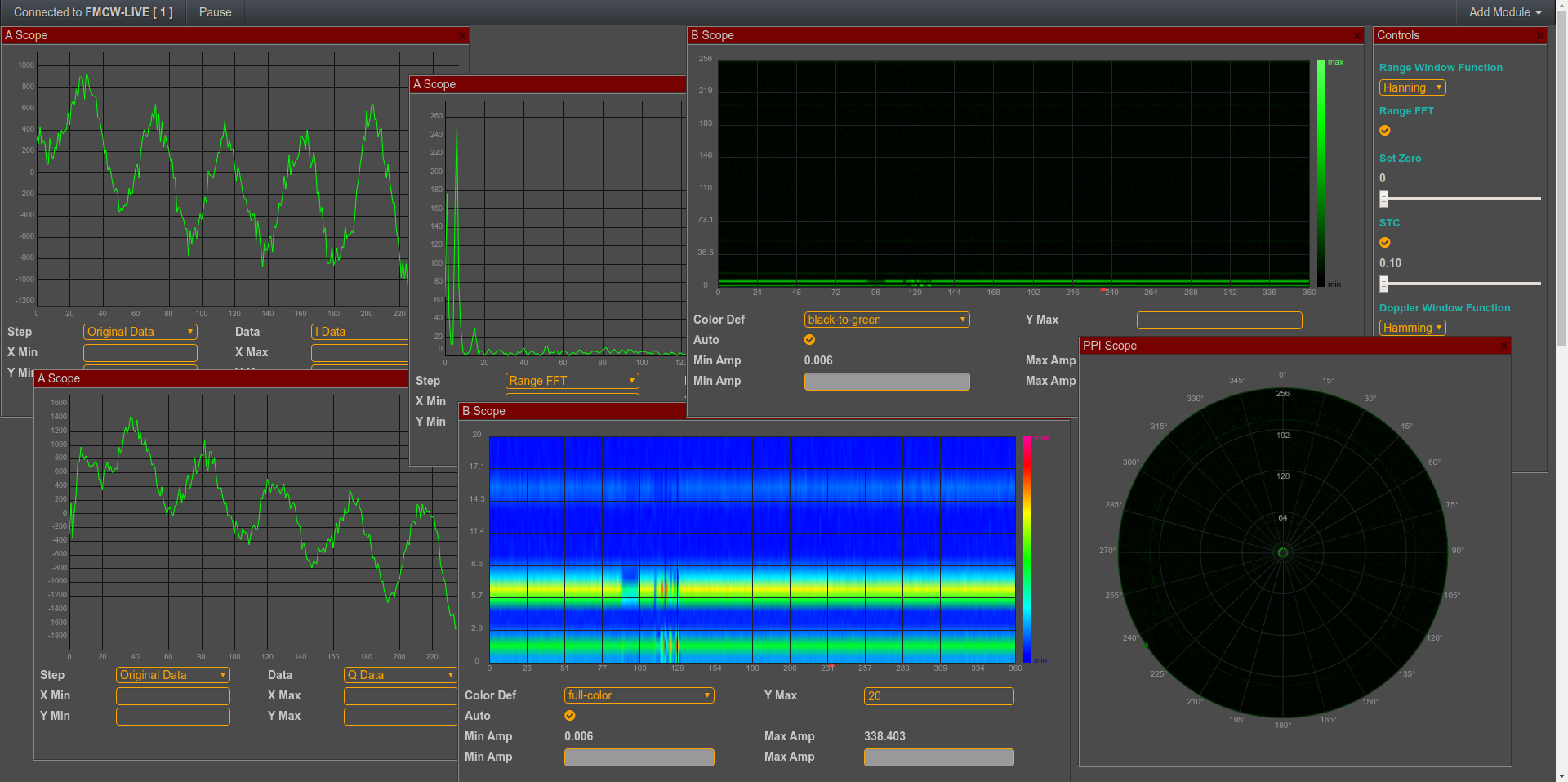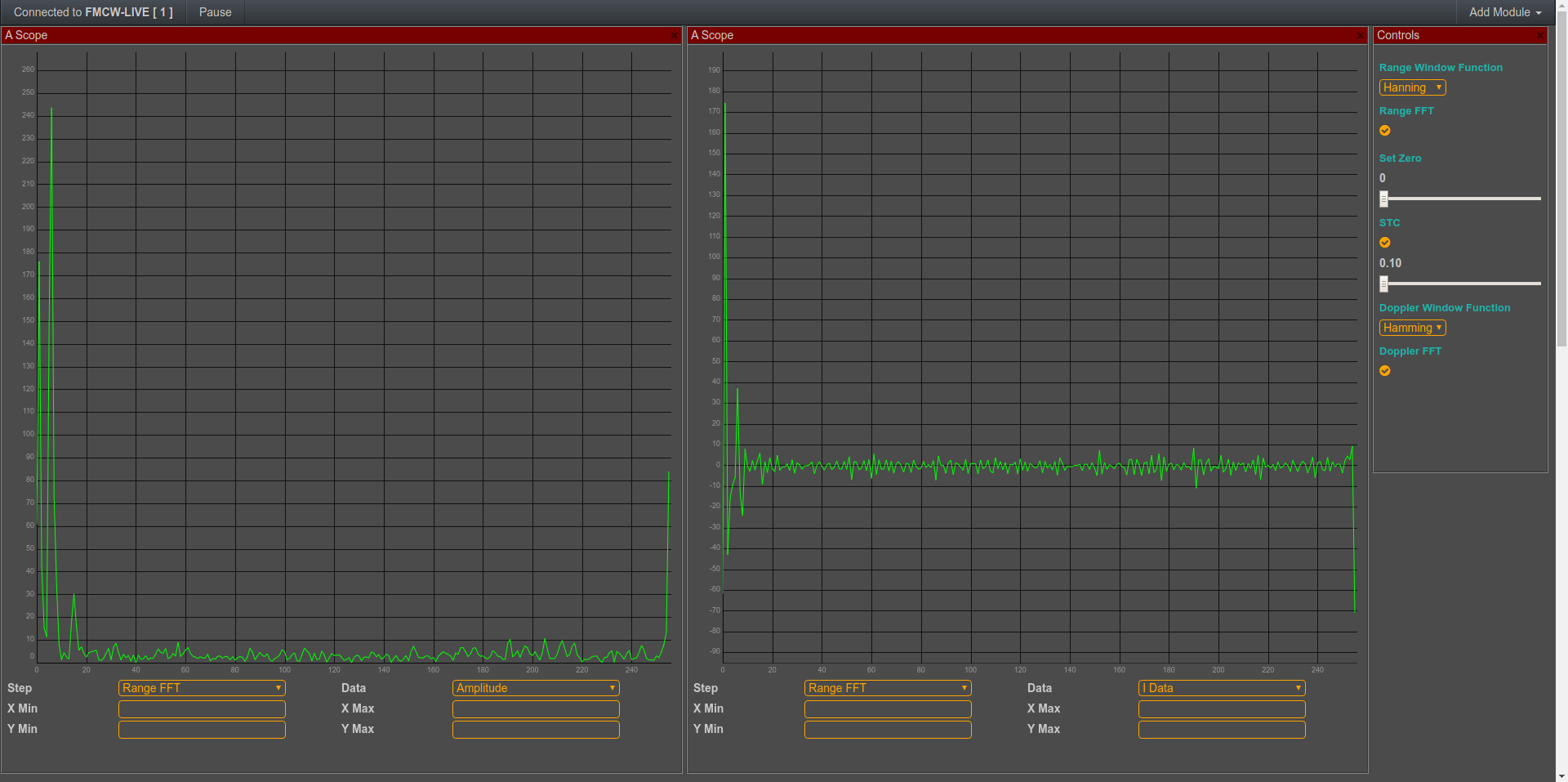Frequently asked questions
A collection of articles and resources
A collection of articles and resources
All Radars by SkyRadar allow for a concurrent manipulation of radar data. Here we explain the principle.
The output of a radar (e.g., the ramp of the FMCW, or simply the rotation or panning of the radar antenna) need to be done by one user only. Normally this person is the coach or lecturer who is organizing the class. Imagine all students could switch rotation on and off when they want - the professor would be driven crazy.
So we password protect these settings.
But everything that can be done with the input data can be done concurrently.
We provide to all users and their client PCs the IQ raw data - even before FFT.
Each user has a complex radar laboratory, emulated in his browser. All kinds of manipulations (e.g., FFT), filters (STC, threshold, Hann, Hamming, etc), Amplification of signals, or the analysis of the I or Q part of the signal.
We provide A-Scopes, B-Scopes and PPIs and lots of controls.

The FreeScopes software from 6.x onwards gives the possibility to arrange several scopes next to eachother. Each scope can start at different stages in the radar manipulation chain. You may for instance compare the signal before or after FFT, or the full amplitude with the I-Data part (see below).

In the example below we compare the I-data part and the Q-Data part:

Apart from the normal FreeScopes output you can also get, free of charge a (basic) MATLAB exe, serving as a client and basis for your MATLAB laboratory. You can add your filters, scopes, or whatever needed manipulation with the MATLAB toolkit.
For ATC academies, the ASTERIX format output is important and can be fed into other ATC software (e.g. tower simulators) with SkyRadar's ASTERIX client (yes, again, no additional cost).
You can on top of that build your own analytics, using our JSON message stream.
Our radars feed the IQ signal as a JSON message (including IQ-data, timestamp, position of antenna, etc) into your system.
The FreeScopes software does all the manipulations locally in the browser. So each student is independent.
You should have a good-enough computer and browser. For details on computer and browser see here.
Our object is to provide NextGen training solutions, answering (among others) to these requirements of universities and ATC academies:
Really, we do not limit the access. If you have up to 5 students that learn concurrently, they may directly access the radar. Once you exceed this number, we suggest to use SkyRadar's cloudserver. This server will be locally installed in your premises and makes sure (through a message queue) that many students can learn concurrently.
We have tried 1.500 students concurrently. It worked without any decline in performance.
German Manufacturing, European Research, Global Engineering
SkyRadar develops innovative radar training solutions and simulation systems, empowering education, research & professional training in aviation and defense sectors.
All rights reserved by SkyRadar 2008 - 2025
